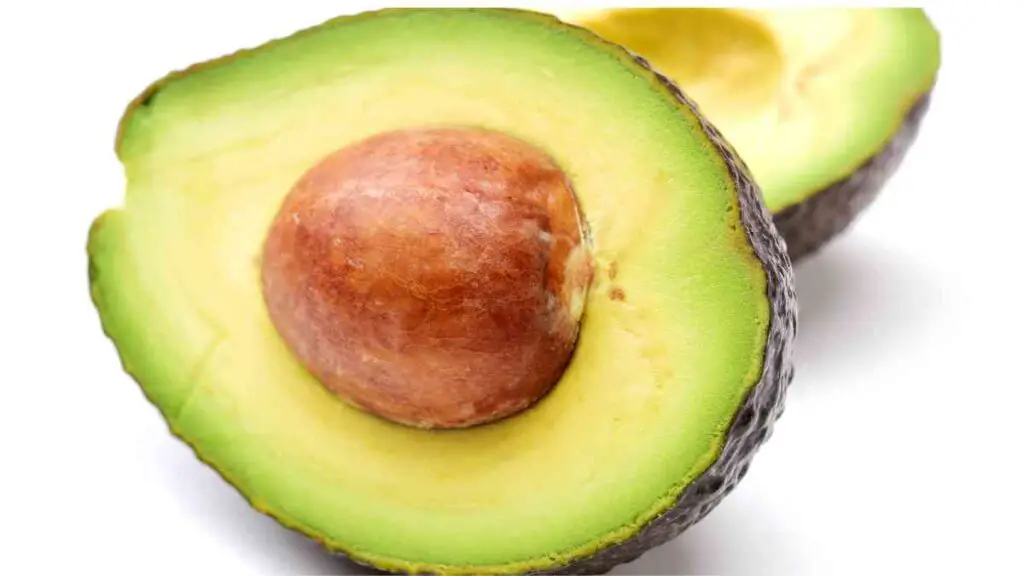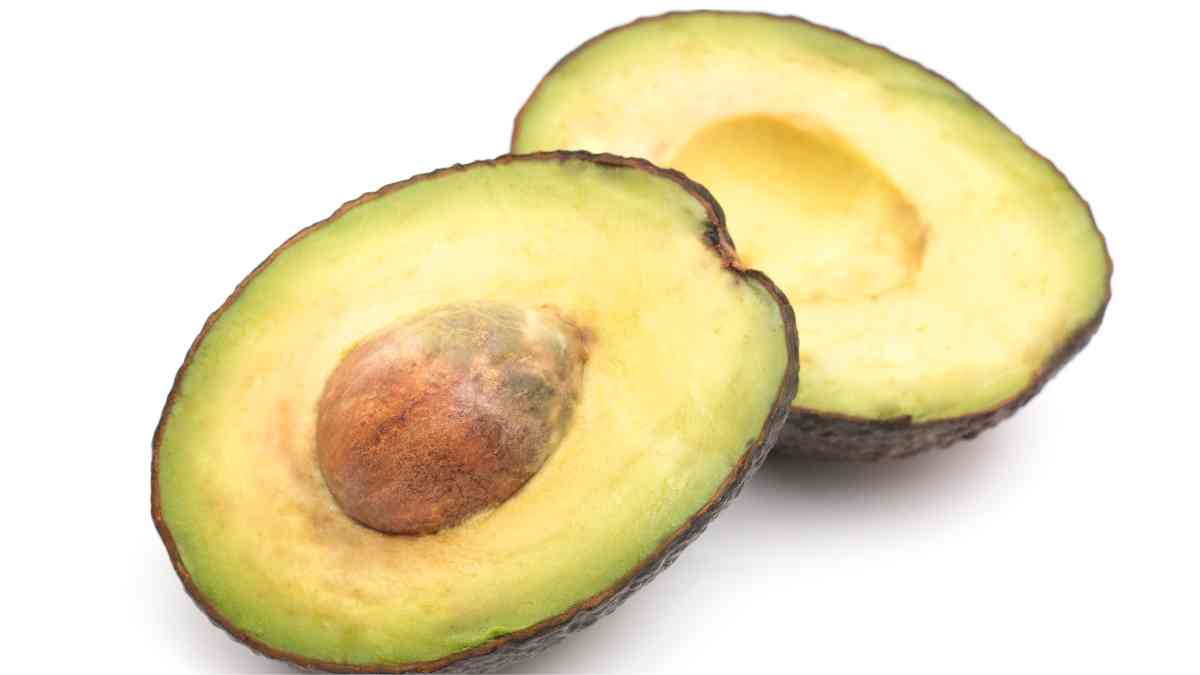Avocados are a beloved fruit known for their creamy texture and healthy fats. However, many avocado enthusiasts have experienced frustration when their favorite green fruit turns an unappealing shade of brown.
In this article, we will delve into the scientific reasons behind avocado browning, exploring the factors that contribute to this phenomenon. Additionally, we will discuss various methods and techniques to prevent avocado browning, as well as analyze the effectiveness of different browning inhibitors.
| Takeaways |
|---|
| Key Points: |
| – Avocado browning is a result of enzymatic reactions involving polyphenol oxidase (PPO) and oxygen exposure. |
| – Factors influencing avocado browning include temperature, pH levels, and enzymatic activity. |
| Prevention Techniques: |
| – Minimize avocado’s exposure to oxygen by reducing surface area or using storage techniques like plastic wrap. |
| – Acidic substances like lemon or lime juice can inhibit browning due to their antioxidant properties. |
| Storage Tips: |
| – Keep unripe avocados at room temperature. |
| – Once ripe, store avocados in the refrigerator to extend freshness. |
| Browning Inhibitors: |
| – Ascorbic Acid (Vitamin C): Effective in preventing browning when applied to the exposed flesh. |
| – Citric Acid: Found in lemon and lime juice, it acts as a natural inhibitor of browning. |
| – Lime Juice: Contains citric acid, providing an effective method to slow down browning. |
| – Olive Oil: Coating cut avocados can form a barrier against oxidation and slow down browning. |
The Science Behind Avocado Browning
Avocado browning, also known as enzymatic browning, is a chemical reaction that occurs when the flesh of an avocado comes into contact with oxygen.
This reaction is facilitated by an enzyme called polyphenol oxidase (PPO), which is naturally present in avocados. When an avocado is cut or its skin is damaged, the PPO reacts with the oxygen present in the air, leading to the formation of brown pigments known as melanins.
“Meal planning can be a lifesaver.” Explore the Busy Person’s Guide to Meal Planning to learn efficient strategies for organizing your meals and saving time in your busy schedule.
Factors Influencing Avocado Browning

Avocado browning can be influenced by several factors, including enzymatic browning, oxygen exposure, temperature, and pH levels.
Enzymatic Browning
Enzymatic browning is one of the primary factors behind avocado discoloration. When the avocado flesh is exposed to oxygen, PPO is activated and begins catalyzing a series of reactions that produce brown pigments. This process can be slowed down or even prevented by inhibiting the activity of PPO or minimizing oxygen exposure.
Oxygen Exposure
Avocados turn brown more rapidly when exposed to oxygen. That’s why you may have noticed that the exposed part of a cut avocado turns brown faster than the unexposed part. To prevent this, it’s essential to minimize the surface area of exposed flesh and find ways to limit the avocado’s contact with air.
“Upgrade your cooking game effortlessly.” Discover the must-have kitchen gadgets that can transform your culinary experience in the Best Kitchen Gadgets for Effortless Home Cooking article and take your meals to the next level.
Temperature
Temperature plays a significant role in avocado browning. Lower temperatures inhibit enzymatic browning, while higher temperatures accelerate the process. Therefore, storing avocados at colder temperatures can help slow down the browning process and prolong their freshness.
pH Levels
The pH level of avocados can also impact browning. Avocados are slightly acidic, and their pH can vary depending on their ripeness. When the pH level is more acidic, browning occurs at a slower rate. However, as avocados continue to ripen, their pH increases, leading to accelerated browning.
Preventing Avocado Browning
While avocado browning is a natural chemical reaction, there are various techniques and methods to slow down or prevent the process. By following these tips, you can keep your avocados looking fresh and appetizing for longer.
Quick Tips to Prevent Browning
- Cut open and consume avocados immediately before serving to minimize oxygen exposure.
- Sprinkle freshly squeezed lemon or lime juice over cut avocados to act as a natural browning inhibitor.
- Store cut avocados in an airtight container, minimizing the contact with oxygen.
“Time is precious in the kitchen.” Check out the Time-Saving Kitchen Tools Every Home Cook Needs to discover essential tools that can streamline your cooking process and make your time in the kitchen more efficient.
Storage Techniques
Properly storing avocados can extend their lifespan and reduce browning. Keep unripe avocados at room temperature until they are ripe enough for consumption. Once ripe, you can store them in the refrigerator, which will help slow down the browning process. For cut avocados, store them in an airtight container or wrap tightly with plastic wrap.
Lemon Juice Method
Acidic substances can inhibit avocado browning, and lemon juice is an excellent choice. By squeezing fresh lemon juice over cut avocados, you lower the pH level, reducing the enzymatic browning process. The citric acid in lemon juice acts as a natural browning inhibitor without significantly affecting the taste of the avocado.
Plastic Wrap Method
Wrapping cut avocados with plastic wrap is another effective method to prevent browning. By tightly covering the exposed flesh with plastic wrap, you create a barrier that limits the avocado’s exposure to air. This barrier helps reduce the oxidation process, ultimately slowing down the enzymatic browning and extending the avocados’ freshness.
“Spices can elevate your cooking.” Learn how to unleash the Power of Spices and use different herbs and spices to add depth, flavor, and aroma to your dishes, enriching your culinary creations.
In-depth Analysis of Browning Inhibitors
Various substances have been found to inhibit avocado browning. Let’s take a closer look at some of these browning inhibitors and their effectiveness in preventing avocado discoloration.
Ascorbic Acid (Vitamin C)
Ascorbic acid, commonly known as vitamin C, is a powerful antioxidant that can help inhibit enzymatic browning in avocados. When applied to the exposed flesh, ascorbic acid reacts with oxygen and prevents the oxidation process, thereby slowing down browning. You can find ascorbic acid in the form of powdered vitamin C or use lemon or lime juice as a natural source of vitamin C.
Citric Acid
Citric acid, another acid commonly found in citrus fruits like lemons and limes, is also effective in inhibiting avocado browning. Similar to ascorbic acid, citric acid reacts with oxygen and hinders the enzymatic browning reaction. Using freshly squeezed lemon or lime juice, which contains citric acid, is a convenient and natural way to prevent avocado discoloration.
Lime Juice
Lime juice, like lemon juice, contains citric acid, which can act as a browning inhibitor. By squeezing fresh lime juice over cut avocados, you introduce citric acid to the exposed flesh, reducing the enzymatic browning process. Lime juice not only helps in preventing browning but also adds a zesty flavor to your avocados.
“Maximize the freshness of your produce.” Find out the Best Practices for Storing Fruits and Veggies to ensure that your fruits and vegetables stay fresh, flavorful, and nutritious for a longer time, optimizing your culinary ingredients.
Olive Oil
Olive oil has been suggested as another method to slow down avocado browning due to its antioxidant properties. By coating cut avocados with a thin layer of olive oil, you create a barrier that reduces oxidation and enzymatic browning. However, it’s important to note that using olive oil may alter the taste and texture of the avocado, so it is best used in dishes where the flavor combination works well.
Comparing Browning Inhibitors in a Table
To make it easier for readers to understand and compare the effectiveness of different browning inhibitors, let’s create a table that showcases the inhibitors and their impact on avocado browning:
| Browning Inhibitor | Effectiveness |
| Ascorbic Acid | High |
| Citric Acid | High |
| Lime Juice | Moderate |
| Olive Oil | Moderate |
Please note that the effectiveness may vary based on the concentration and application method of these inhibitors. Additionally, personal preferences regarding taste and texture may also influence the choice of browning inhibitors.
Conclusion
Avocado browning is a natural enzymatic reaction that occurs when the flesh comes into contact with oxygen. Understanding the science behind this process and the factors that influence it can help us find effective ways to prevent browning.
Through proper storage techniques, such as minimizing oxygen exposure and using browning inhibitors like lemon juice or plastic wrap, we can extend the freshness of avocados and enjoy them without the unappetizing discoloration.
In conclusion, by incorporating these preventive methods and utilizing browning inhibitors, we can maintain the vibrant green color of avocados longer, ensuring a visually appealing and delicious addition to our meals. Enjoy your avocados without the worry of them turning brown, and savor their natural creaminess and health benefits.
Further Reading
For those who are interested in delving deeper into the topic of avocado browning, here are some additional resources that provide valuable insights and information:
Why Do Avocados Turn Brown? The Chemistry of Avocados: This article explains the scientific aspects of avocado browning, focusing on the chemical reactions and processes involved.
Brown Guacamole – Science Fair Article: This educational resource dives into the science behind brown guacamole and provides explanations suitable for young learners.
Is That Avocado Brown Already? Genetic Research Could Help: Purdue University’s research on the genetic factors contributing to avocado browning sheds light on the potential for developing avocados with increased resistance to browning.
FAQs
Here are some frequently asked questions about avocado browning and their corresponding answers:
How does enzymatic browning occur in avocados?
Enzymatic browning in avocados occurs when the flesh is exposed to oxygen, activating an enzyme called polyphenol oxidase (PPO). This enzyme reacts with oxygen, leading to the production of brown pigments known as melanins.
Can I prevent avocado browning by refrigerating the fruit?
Refrigerating avocados can indeed slow down the browning process. Lower temperatures inhibit enzymatic browning, keeping the avocados fresher for longer. However, it’s important to note that refrigeration can also slow down the ripening process of unripe avocados.
Why does lemon juice prevent avocado browning?
Lemon juice contains citric acid, which acts as a natural browning inhibitor. The acid lowers the pH level of the avocado, slowing down the enzymatic browning process.
Are there any genetic factors influencing avocado browning?
Yes, genetic factors can contribute to avocado browning. Research conducted at Purdue University has identified certain genes associated with browning, which could potentially be targeted for developing avocados with increased resistance to discoloration.
Can I use other fruits or ingredients to prevent avocado browning?
Yes, several fruits and ingredients can help inhibit avocado browning. Citrus fruits like lime or orange juice, as well as acids such as vinegar, can act as effective browning inhibitors when applied to cut avocados.

Hi, I’m Hellen James! I’m a professional chef who has been cooking for over 12 years. In my career, I’ve worked at some of the world’s most prestigious hotels and restaurants. My expertise lies in creating recipes that are simple but delicious, and I love to experiment with new ingredients and techniques. I started this blog because I want to share my passion for cooking with everyone who loves food as much as I do.


